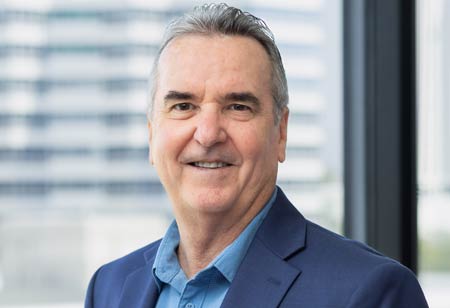Sustainable agriculture stands as a paramount concept, embodying practices that harmonize the current demands without imperiling the capability of future generations to meet their own necessities. These methods, such as regenerative agriculture, aim to curtail agricultural runoff, deter pollution of water bodies, conserve water, and uphold soil fertility by reutilizing nutrients within the farming ecosystem. The urgency for sustainable agricultural practices amplifies today, given the widespread degradation and diminished productivity of agricultural soils coupled with the dwindling reserves of traditional fertilizers. This pressure is mounting on farmers to make their operations more sustainable and reduce their environmental footprint, particularly in the realms of climate change and declining water quality.
The 2017 EPA National Lakes Assessment Report starkly revealed a distressing reality: the number of lakes in poor condition due to heightened nitrogen and phosphorus levels has nearly doubled since the inaugural NLA in 2007. A chief contributor to this nationwide decline in water quality traces back to fertilizer runoff from agricultural activities. Studies have showcased that a staggering 50-75% of applied fertilizer is lost from fields, seeping into surface water runoff and leaching into groundwater. These surplus nutrients spark rampant algae growth and the proliferation of Harmful Algal Blooms (HABs), which have caused some of the nation’s most complex and challenging environmental problems, affecting almost every state in the U.S. The consequences in places like Florida have been devasting, disrupting communities, damaging tourism, and even leading to the declaration of a state of emergency in 2018.
The urgency for sustainable agricultural practices amplifies today, given the widespread degradation and diminished productivity of agricultural soils coupled with the dwindling reserves of traditional fertilizers
To combat the adverse effects of nutrient runoff, the agricultural sector has embraced Best Management Practices (BMPs), such as the creation of agricultural runoff ponds designed to impede the flow of nutrients from farming operations. Theoretically, these ponds increase retention time, facilitating physical processes like sedimentation alongside biological mechanisms such as bacterial and algal uptake to mitigate nutrient levels. However, during heavy precipitation, these systems reach their capacity, leading to the discharge of nutrient-rich water and algae into downstream bodies. Paradoxically, while algae are adept at absorbing nutrients and carbon, their decay in water bodies can further elevate nutrient levels, exacerbating the formation of HABs.
In a groundbreaking stride towards addressing nutrient runoff, Dan Levy, the visionary behind AECOM’s Algae practice, and his team of leading algae experts have pioneered a technological breakthrough that revolutionizes sustainable agriculture. Their innovation involves harvesting microscopic algae cells from agricultural runoff ponds and repurposing the recovered algae as an organic fertilizer. This closedloop, nature-based solution capitalizes on algae’s remarkable ability to efficiently absorb nutrients and gradually release them back into the soil as the algae decomposes. The technology breakthrough is AECOM's patent-pending Hydronucleation Flotation Technology (HFT), also known as Algae Harvesting, which efficiently separates microscopic algae from water, returning clean water to the aquatic system while yielding an algae slurry rich in nutrients. This nutrientrich slurry, comprised of valuable elements such as nitrogen, phosphorus, and carbon, serves as an organic fertilizer and soil amendment.
AECOM’s algae harvesting system underwent rigorous testing at the May Nursery in Havana, FL, in a field trial funded by the US EPA’s Gulf of Mexico Division (GMD) Farmer to Farmer Program. The objective was to curtail the release of nutrients into surface waters flowing into the Gulf of Mexico, thereby mitigating the formation of Harmful Algal Blooms (HABs). The project succeeded in treating approximately two million gallons of nursery runoff water, extracting 4,040 gallons of wet algae biomass slurry, thus offering tangible evidence of progress. Detailed assessments of water samples collected from inlet and outlet ports of the harvester provided valuable insights into the efficacy of the algae harvesting process, indicating a significant reduction ranging from 60-74% for total nitrogen and 63-68% for total phosphorus—during various harvesting seasons. These results underscore the groundbreaking effectiveness of this technology in abating nutrient pollution from agricultural industries.
Additionally, growth studies conducted by the University of Florida Institute of Food and Agricultural Sciences (UF/IFAS) using algae recovered from the May Nursery stormwater pond demonstrated that the retrieved algae biomass can replace more than 50% of synthetic fertilizers. The assessment, based on the growth of Brassica carinata (Ethiopian mustard) plants—a cultivated oilseed crop— showed promising results in terms of plant height and seed yield. These findings herald a significant pathway for the agricultural sector to embrace sustainability by utilizing algae as a supplement or even a substitute for synthetic fertilizers, thereby fostering a circular nutrient economy in food and nursery plant production.
In essence, AECOM's Algae Practice provides the platform for 21st-century sustainable farming by addressing the intertwined challenges of environmental degradation, climate change, and food security while concurrently fostering societal and economic well-being. By advocating a holistic approach to agriculture—one that harmonizes present needs without jeopardizing the prospects of future generations—AECOM cultivates partnerships with farmers, imparting expertise to enable sustainable operations and the production of agricultural goods while safeguarding the environment. Empowering farmers to enhance efficiency while protecting their yields stands to benefit society as a whole.


